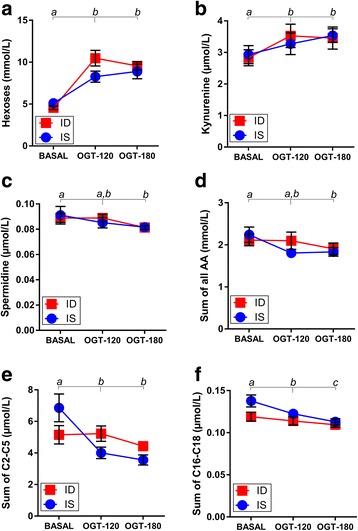Fig. 3.

Metabolites of importance which were significantly affected by OGT in insulin-sensitive (IS) and insulin-dysregulated (ID) horses. Concentration of (a) hexoses (repeated measure two-way ANOVA (rmTWA), factor OGT p < 0.001) and (b) kynurenine (rmTWA, factor OGT p < 0.01) increased, while (c) spermidine (rmTWA, factor OGT p < 0.01), (d) sum of all proteinogenic amino acids (rmTWA, factor OGT p < 0.05) (e) sum of short-chain (C2, C3, C4 and C5) acylcarnitines (rmTWA, factor OGT p < 0.001) and (f) sum of long-chain (C16, C16:1, C16:2, C:18, C18:1, C:18:2) acylcarnitines (rmTWA, factor OGT p < 0.001) decreased. Insulin status had no significant effect. Means ± SEM are shown, n = 10; a, b, c = different superscripts indicate significant differences between basal and challenged conditions as the main OGT effect in both ID and IS horses (Bonferroni post hoc test)
